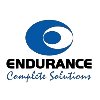Filter interviews by
Shanthi Gears Interview Questions and Answers
21 Interview questions
There are several types of gears used in industrial gearboxes, including spur gears, helical gears, bevel gears, worm gears, and planetary gears.
Spur gears
Helical gears
Bevel gears
Worm gears
Planetary gears
Tool test in Solidworks involves assessing a candidate's proficiency in using various tools and features in the software.
Candidates may be asked to demonstrate their ability to create sketches, extrude features, create assemblies, and generate drawings.
They may also be tested on their knowledge of advanced tools such as simulation, sheet metal design, and surface modeling.
Candidates should be familiar with the use...
There are several potential customers in and around Nagpur where we can sell gearboxes.
ABC Industries in MIDC Hingna
XYZ Engineering in Butibori
PQR Manufacturing in Wadi
LMN Enterprises in Kalamna
EFG Corporation in Amravati Road
HIJ Solutions in Dhantoli
A gearbox is a mechanical device that transmits power from an engine to the wheels, adjusting the speed and torque.
Gearboxes are commonly used in vehicles to provide different gear ratios for various driving conditions.
They allow the engine to operate at its most efficient speed while providing the necessary power to the wheels.
Gearboxes can be manual or automatic, with manual gearboxes requiring the driver to man...
There are two types of Vera's box: planetary and spur gear. Spur gear boxes often face problems related to noise and vibration.
Two types of Vera's box: planetary and spur gear
Spur gear boxes often face problems related to noise and vibration
The gear box is a crucial component in the machinery, responsible for transmitting power from the engine to the wheels or other parts.
The gear box is responsible for changing the speed and torque of the machinery.
It is important to regularly check and maintain the gear box to ensure optimal performance.
Common issues with gear boxes include leaks, worn gears, and damaged bearings.
Different types of gear boxes inclu...
Gear boxes are used in various applications to transmit power and torque from one rotating shaft to another.
Automotive industry for transmission of power from engine to wheels
Industrial machinery for power transmission in conveyor belts, cranes, etc.
Wind turbines for power transmission from rotor to generator
Marine industry for power transmission in propellers and winches
Aerospace industry for power transmission i...
Heat treatment is a process of heating and cooling metals to alter their physical and mechanical properties.
Heat treatment is used to improve the hardness, strength, toughness, and ductility of metals.
It involves heating the metal to a specific temperature and holding it there for a certain amount of time.
The metal is then cooled at a specific rate to achieve the desired properties.
Different types of heat treatmen...
Vibration analysis of gearbox involves measuring and analyzing the frequency and amplitude of vibrations to detect any potential issues.
Use vibration sensors to measure the frequency and amplitude of vibrations
Analyze the data using software to identify any abnormal patterns or frequencies
Compare the results to established standards or previous measurements to determine if there are any issues
Common issues detecte...
Bearings are machine elements that reduce friction between moving parts. There are several types of bearings.
Plain bearings
Rolling element bearings
Jewel bearings
Fluid bearings
Magnetic bearings
Flexure bearings
Shanthi Gears Interview Experiences
18 interviews found
(2 Questions)
- Q1. About Gearbox selection procedure
- Q2. Torque calculation
Interview Preparation Tips
Technical study is must for this round.
(1 Question)
- Q1. Gear knowledge and markets knowledge is mandatory.
(1 Question)
- Q1. Salary negotiation
I applied via Walk-in and was interviewed in Jul 2023. There were 4 interview rounds.

It's about engineering basics
(1 Question)
- Q1. Tool test in solidworks
- Ans.
Tool test in Solidworks involves assessing a candidate's proficiency in using various tools and features in the software.
Candidates may be asked to demonstrate their ability to create sketches, extrude features, create assemblies, and generate drawings.
They may also be tested on their knowledge of advanced tools such as simulation, sheet metal design, and surface modeling.
Candidates should be familiar with the user int...
(2 Questions)
- Q1. Tell me about yourself
- Q2. Project explanation
Interview Preparation Tips
- Solid Works
Skills evaluated in this interview
I applied via Approached by Company and was interviewed before May 2023. There were 2 interview rounds.
(2 Questions)
- Q1. About yourself?
- Q2. About past experience? CTC?
(2 Questions)
- Q1. About pas experiencez?
- Q2. About Past Experience? P2p Process? Incoterm? How you will Negotiate with monopoly supplier?etc.,
Interview Preparation Tips
I applied via Approached by Company and was interviewed in Jan 2022. There were 2 interview rounds.

(3 Questions)
- Q1. Tell Us aboutr yourself. What is your Job role? Technical Questions related to Gearbox, Steam Turbines.
- Q2. Questions related to Enquiry Generation and Sales
- Q3. Final Round was With R&D Head. It was Purely Technical and questions from Steam Turbines and Gearboxes were asked.
Interview Preparation Tips
- Gearbox
- Sales
I applied via Campus Placement and was interviewed before Mar 2023. There was 1 interview round.
(1 Question)
- Q1. What is meant by gear Ration, Diff between spur and helical gear
- Ans.
Gear ratio is the ratio of the number of teeth on two gears. Spur gears have straight teeth, while helical gears have angled teeth.
Gear ratio is the ratio of the number of teeth on two gears, determining the speed and torque relationship between them.
Spur gears have straight teeth and are used for low-speed applications, while helical gears have angled teeth for smoother and quieter operation at higher speeds.
Spur gear...
Interview Questionnaire
2 Questions
- Q1. About gears and bearing
- Q2. Lean Six Sigma principles
- Ans.
Lean Six Sigma is a methodology that focuses on reducing waste and improving quality in processes.
It combines Lean principles of waste reduction with Six Sigma's focus on quality improvement
It involves identifying and eliminating non-value-added activities
It uses data-driven analysis to identify and solve problems
It aims to achieve continuous improvement in processes
Examples include reducing cycle time, improving produ...
I applied via Company Website and was interviewed in Dec 2021. There was 1 interview round.
Interview Questionnaire
1 Question
- Q1. What's your qualification?
- Ans.
I hold a degree in Computer Science, which has equipped me with essential skills in programming, systems management, and IT support.
Bachelor's Degree in Computer Science: This provided a strong foundation in programming languages like Java, C++, and Python.
Certification in IT Support: I completed a certification program that focused on troubleshooting, system maintenance, and user support.
Hands-on Experience: I have wo...
Interview Preparation Tips
Interview Questionnaire
2 Questions
- Q1. Gear types , gearbox maintenance technician etc
- Q2. How many types used in gearbox at industrial.
- Ans.
There are several types of gears used in industrial gearboxes, including spur gears, helical gears, bevel gears, worm gears, and planetary gears.
Spur gears
Helical gears
Bevel gears
Worm gears
Planetary gears
I applied via Referral and was interviewed before Jul 2022. There were 3 interview rounds.

(2 Questions)
- Q1. Tell me about yourself
- Ans.
I am a passionate Design Engineer with a strong background in mechanical design and a keen interest in innovative solutions.
Graduated with a degree in Mechanical Engineering from XYZ University, where I developed a solid foundation in design principles.
Worked at ABC Company, where I led a team to design a new product that improved efficiency by 20%.
Skilled in CAD software like SolidWorks and AutoCAD, which I used to cr...
- Q2. Types of bearings, Gears & materials
- Ans.
Types of bearings include ball bearings, roller bearings, and plain bearings. Gears can be spur, helical, bevel, or worm gears. Materials commonly used are steel, brass, and plastic.
Types of bearings: ball bearings, roller bearings, plain bearings
Types of gears: spur gears, helical gears, bevel gears, worm gears
Materials used: steel, brass, plastic
(2 Questions)
- Q1. CTC at your current company
- Q2. Why are you leaving your current job
- Ans.
I am seeking new challenges and opportunities for growth that align better with my career aspirations and skill set.
Career Growth: I feel that my current role has limited opportunities for advancement, and I am eager to take on more responsibilities.
Skill Development: I want to work in an environment that encourages continuous learning and allows me to develop new skills, such as advanced CAD software.
Cultural Fit: I a...
Interview Preparation Tips
Top trending discussions






Shanthi Gears Interview FAQs
Tell us how to improve this page.
Shanthi Gears Interviews By Designations
- Shanthi Gears Graduate Engineer Trainee (Get) Interview Questions
- Shanthi Gears Assistant Sales Manager Interview Questions
- Shanthi Gears Management Trainee Interview Questions
- Shanthi Gears Senior Engineer Interview Questions
- Shanthi Gears Engineering Software Interview Questions
- Shanthi Gears Sales Officer Interview Questions
- Shanthi Gears Assistant Manager Interview Questions
- Shanthi Gears Graduate Trainee Interview Questions
- Show more
Interview Questions for Popular Designations
- Executive Interview Questions
- Software Developer Interview Questions
- Senior Associate Interview Questions
- Senior Engineer Interview Questions
- Sales Executive Interview Questions
- Associate Software Engineer Interview Questions
- Senior Software Engineer Interview Questions
- System Engineer Interview Questions
- Show more
Overall Interview Experience Rating
based on 10 interview experiences
Difficulty level
Duration
Interview Questions from Similar Companies
Shanthi Gears Reviews and Ratings
based on 187 reviews
Rating in categories
|
Senior Engineer
79
salaries
| ₹2.3 L/yr - ₹7.7 L/yr |
|
Design Engineer
66
salaries
| ₹1.8 L/yr - ₹4 L/yr |
|
Assistant Manager
52
salaries
| ₹5 L/yr - ₹13.2 L/yr |
|
Graduate Engineer Trainee (Get)
47
salaries
| ₹1.7 L/yr - ₹3 L/yr |
|
Senior Design Engineer
44
salaries
| ₹3.1 L/yr - ₹6.5 L/yr |

JBM Group

Subros

Varroc Group

Endurance Technologies
- Home >
- Interviews >
- Shanthi Gears Interview Questions














